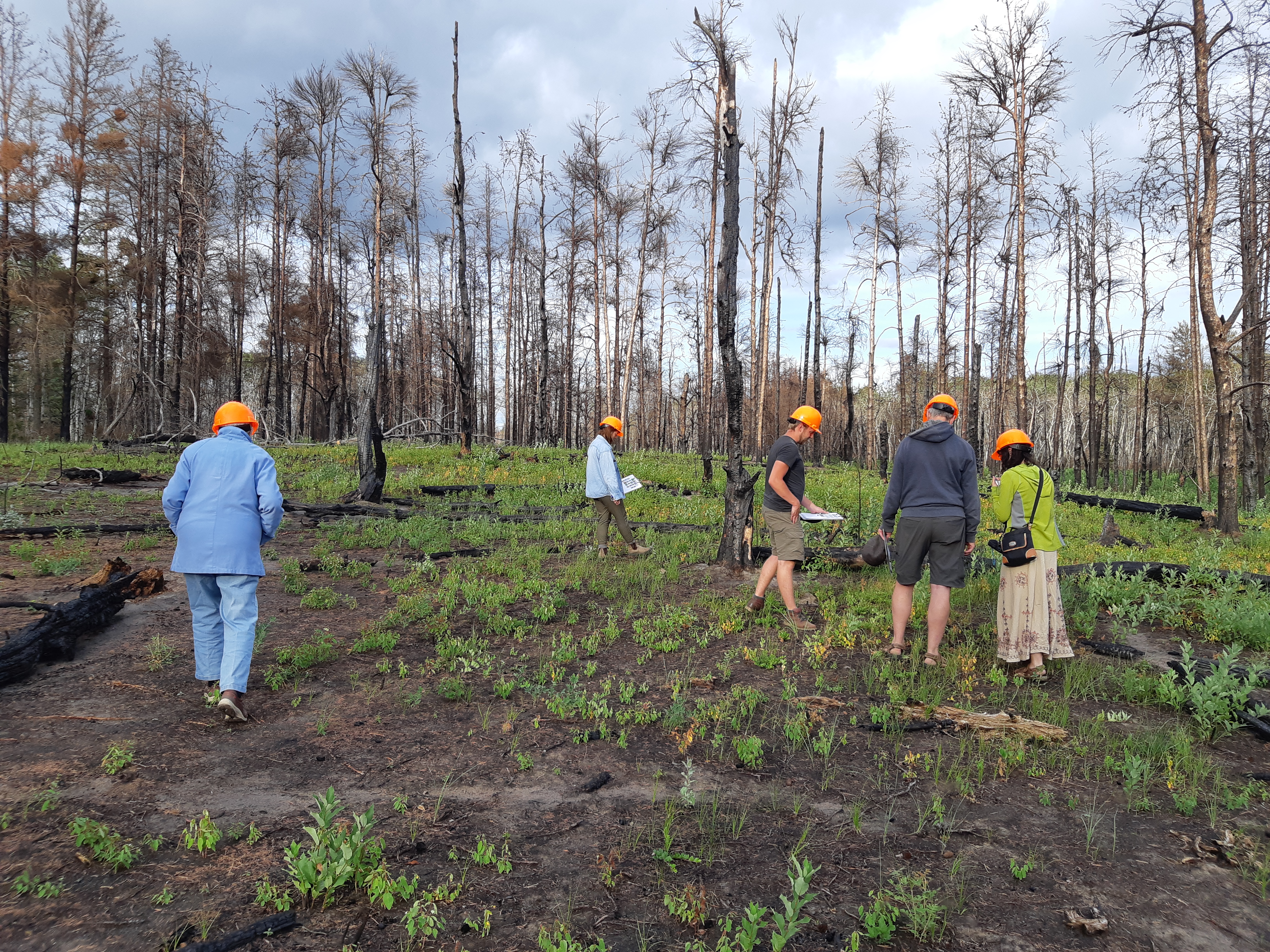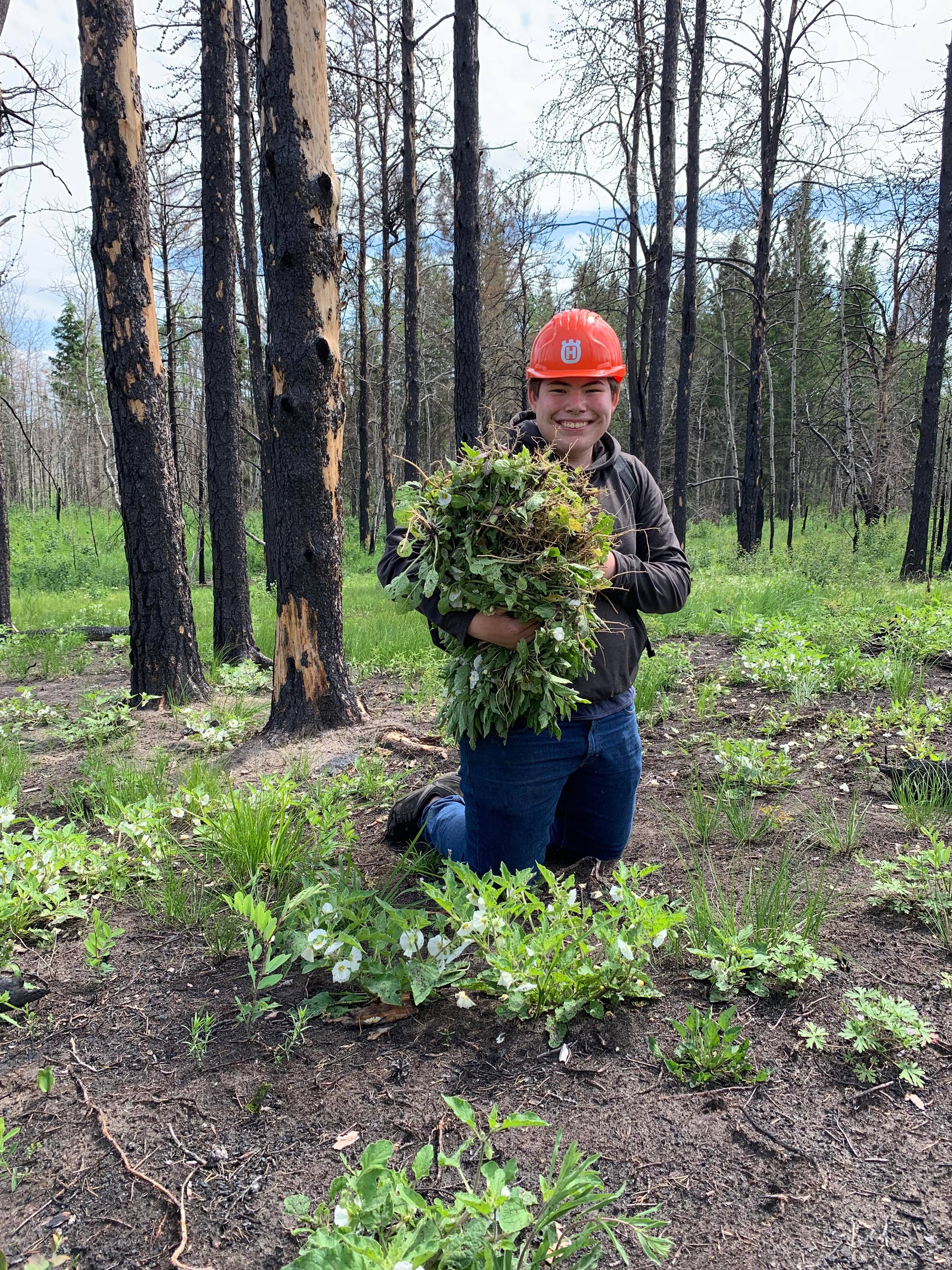Boreal Bio-Logue – What is it and where is it going? Spring 2022

By Caitlyn Anhorn
While the prairies evoke a sense of pride among the people of Saskatchewan, oftentimes many do not realize that more than half the province is covered by dense forest in the province’s north. As you travel through Prince Albert and observe the landscape transition from flat and bountiful agricultural lands in the south to pristine lakes and luscious boreal forest further north, you’ll quickly realize that the northern boreal ecosystem offers a unique sense of what it means to live in Saskatchewan.
As an organization that works to conserve lands across all stretches of the province, CPAWS-Saskatchewan strives to promote increased awareness of these unique places, while instilling province-wide pride in the diversity of our landscapes.

As more people gain deeper appreciation for the boreal forest in our province, it is important to discuss the different types of management that these ecosystems require to stay healthy and function optimally. Specifically, the boreal forest is an intricate ecosystem that requires many living and non-living components not only to survive, but to flourish.
One of these components is fire – although it may seem surprising, the health of the boreal forest is tied very closely to fire. When a fire sweeps through the forest, it helps to get rid of dead brush while offering old forests the chance to regenerate new growth; however, fire management is a difficult topic due to its encroachment on communities and its intensification due to climate change.
In the spring of 2021, a wildfire – now referred to by locals as the Cloverdale Fire – tore through the outskirts of Prince Albert, forcing an evacuation of homes in the area and the closure of a busy highway. After the fire was contained and the weeks passed, we were curious about what the burn site might look like, what kind of species would grow back, and how the overall functioning of the forest would change over time. From this curiosity, the Boreal Bio-logue was born. That August, we hosted the inaugural Boreal Bio-logue where we engaged with the local community to learn more while raising awareness of the boreal forest and its unique cycles – from both Indigenous and Western perspectives.
Bridging Indigenous and Western knowledge of the Boreal Forest – the Ultimate Goal of the Bio-logue
From the very beginning, the idea of bridging Indigenous and Western knowledge together and highlighting ways in which each can complement one another has been a key element of the Bio-logue. Both understandings of the natural world play a significant role in our efforts to reduce our carbon footprint and minimize the impacts of climate change. Therefore, thinking about how to best manage the natural world through diverse social and cultural lenses is critical for the environmental challenges we face today.
With climate change happening before our eyes, we’re seeing more forest fires in and around communities – increasing in both intensity and frequency. As wildfires increase, it is important that communities are not only equipped to deal with them, but are also able to effectively manage the landscape around them, all while understanding the critical role that wildfires play in a healthy forest’s regeneration process.
But this concept is not new. Indigenous communities have been living with and among the forest and fire for thousands of years, therefore it is important to take their lead in fire management. Indigenous knowledge that has been passed through generations has guided these fire management practices, standing the test of time, and thus, are deserving of a high level of respect when it comes to understanding fire.
That being said, because Indigenous ways of managing fire are an important component of their relationship and stewardship of the land, practices of fire management are much more than simply reacting to a given fire at a specific time. Generally speaking, the forest ecosystem plays a crucial role in species’ habitat, hunting and gathering for subsistence, protecting culturally important areas, and so much more – an understanding that has been well-known to Indigenous peoples for centuries and one that Western science is beginning to better appreciate.



As the climate changes, it is also important to compare and monitor trends within and between forest sites in order to better understand how the health of the forest might change. An elevated understanding of how the forest is responding to such events will help inform forestry management plans. Comparing trends within and between forest sites also helps with identifying whether a site is growing back in a healthy way, especially as fires intensify and the forest floors are more susceptible to invasive species taking over. Therefore, including both Indigenous and Western knowledge in forest and fire management practices is critical to the overall health of the boreal forest.
Bio-logue 2021
So, what exactly is the Boreal Bio-logue? In the summer of 2021, CPAWS Saskatchewan and the Prince Albert Model Forest took an opportunity to increase awareness about the boreal forest and how the ecosystem responds to fires. By observing a forest that was in the primary stages of new growth due to a recent burn and comparing it to an old-growth site that had been undisturbed for quite some time, participants observed the role of fire first-hand. To get a historical, cultural, and scientific understanding, we included teachings from both Indigenous and Western knowledge standpoints.
During two separate sessions, we hosted the general public at Little Red River Park in Prince Albert, as well as at a Cloverdale Fire site. Participants were guided by Dr. Leo Omani (Elder from Wahpeton Indian Reserve) and Justine Hunter (Western scientist from Prince Albert), who shared teachings on climate change, tree growth and health, species identification, the role of fires in forests, and the 2021 spring fire itself – from their respective knowledge backgrounds. Participants also had the chance to identify species themselves, with help from a species identification sheet.



Through the Bio-logue, participants engaged first-hand in learning about the impacts of climate change that they can relate to. To this extent, one participant was happy to have the opportunity “for younger people to learn about their ‘neighbourhood’ and the wonders of nature that goes along with that.” Learning about nature that exists essentially in your backyard is a great start towards further engagement, stewardship, and relationship with the environment.
Where we are now – Spring 2022
We were very excited to expand the Boreal Bio-logue this year, thanks to support from the TD Friends of the Environment Fund. Earlier this spring, we held a Bio-logue and are holding another one this fall. In spring 2022, we hosted two separate Environmental Sciences 20 classes from Carlton Comprehensive High School in Prince Albert.



Once again in 2022, the programming was centered on bridging Indigenous and Western knowledge. We discussed climate change and its effects on the boreal forest including communities, food sovereignty, fire, and the expansion of species’ ranges. The youth had the chance to walk in the old-growth boreal forest while identifying and spotting the difference between species like bearberry, yarrow, spruce, pine, wood and prickly rose, and more. We also visited the Cloverdale Fire (‘new forest’) site to observe and compare. Beyond this, each day had a specific focus.
The first group of students had the chance to learn from special guests Diana Bird and Justine Hunter. Diana has a particular interest in food sovereignty from an Indigenous lens, thus provided insight into mindful harvest and the importance of mindful gathering. She also discussed fire from an Indigenous perspective and the need for Indigenous Nations to have control of fire management in their territory. Additionally, Justine has particular interest in forest ecology in Saskatchewan. She led the group through species identification and discussed fire from a scientific ecological perspective. Having female leadership at this event was powerful and was an added benefit for the female youth in the group.
On the second day, the group had the chance to learn about invasive species in more depth and their impacts on a forest’s regrowth process. At the Cloverdale Fire site, the focus shifted to a more hands-on activity as the students observed an encroachment of invasive species on the forest floor. Here, the youth got their hands dirty while picking invasive species with curious minds and many questions for the guides.



(Photo by Kelsey Olson)
What’s next? – Fall 2022
Now, we have the opportunity to learn from what we’ve done and move forward. In the fall, we will host another Boreal Bio-logue and incorporate more hands-on experiences for the youth.
As we reflect on the overall experience, we appreciate how valuable the event was for both the youth and the forest. Revisiting the sites, especially the Cloverdale Fire site, has been beneficial in encouraging curious minds and interest in forest ecology, as well as insight into the health of the forest and its ability to regrow after fire disturbance.
From here we’re left with uncertainty and many questions surrounding the health of forest regeneration in this location: Is the forest growing back as it should be? How is climate change impacting the regrowth of primary species? Will invasive species take over and prevent their growth? Was the soil scorched, preventing new growth? Did previous growth of dwarf mistletoe impact the trees’ cones?
Ultimately, like the boreal forest itself, the Boreal Bio-logue is evolving and providing many opportunities for us to learn and observe – and we are excited for it to keep growing.
